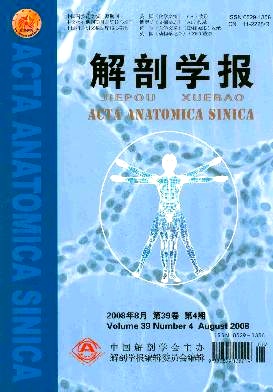|
|
DEDIFFERENTIATION OF MACROGLIAL CELLS AFTER OPTIC NERVE INJURY AND ITS INDUCTION WITH PREDEGENERATED COMMON PERONEAL NERVE IN RATS
2008, 39 (4):
447-453.
doi:
Objective To investigate the dedifferentiation of neuroglial cells and its induction after optic nerve injury. Methods Adult male SD rats were randomly divided into 4 groups the normal control group, the injury group, the transplantation group and the microcrush and transplantation group. Optic nerves were harvested at days 3, 7, 14 and 28 after the operation. HE staining was used to count the number of neuroglial cells. Immunohistochemistry, Western blotting and in situ hybridization histochemistry were employed together with computerized image analysis to evaluate the expressions of Nestin, GFAP, MBP, NF, BDNF, Nogo-A and Nogo-A mRNA. Immunofluorescence double staining was used to detect the co-expression of Nestin and GFAP or Nestin and MBP. Results The number of cells only increased at day 7 after the nerve injury, the expressions of Nestin, MBP, Nogo-A and Nogo-A mRNA were upregulated, the expressions of GFAP, NF and BDNF were down-regulated, and some Nestin GFAP positive cells and a few of Nestin-MBP positive cells were detected in the injury group. Compared with the injury group, the number of cells was increased sometime after the nerve injury; the expressions of Nestin, GFAP, BDNF and NF were up-regulated, the expressions of MBP, Nogo-A and Nogo-A mRNA were down-regulated, and the number of Nestin-GFAP positive cells increased in the transplantation group and the microcrush and transplantation group. Conclusion After optic nerve injury, some astrocytes undergo dedifferentiation while the macroglial cells display a gene expression pattern that is unfavorable for nerve regeneration. Pre-degenerated peripheral nerves could enhance the dedifferentiation of astrocytes and induce the gene expression pattern of macroglial cells that is favorable for nerve regeneration.
Related Articles |
Metrics
|


